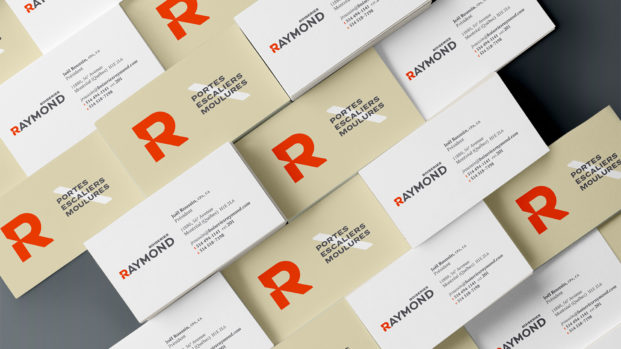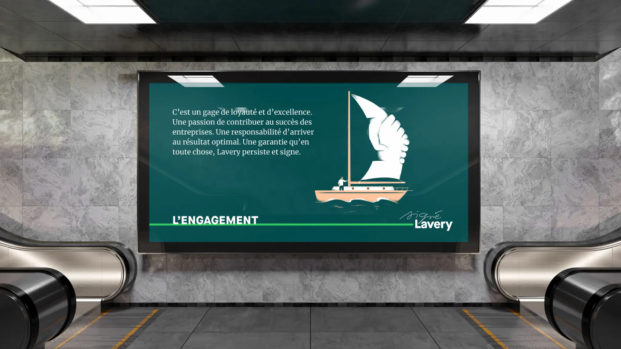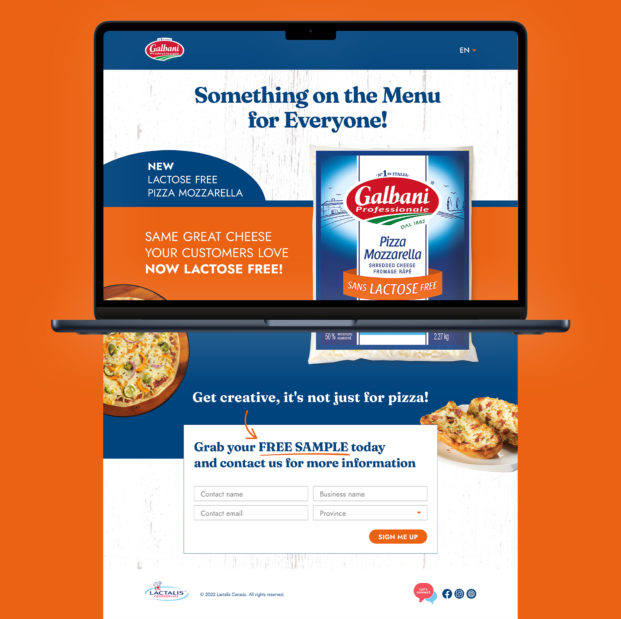While the power of brands is universally recognized in the world of consumer goods and services, it is largely underestimated in the B2B context. Yet, the brand represents one of the most important assets of the company, whose value remains intangible – and unfortunately too often missing from the company’s balance sheet – until the moment of sale or transfer.
The lack of understanding of the brand’s power and value in a B2B context stems mainly from confusion between the notions of branding and graphic design. For many entrepreneurs and business leaders, the brand is essentially associated with the company’s name and logo and the way it is communicated across its various touch points. Hence the perception that “It’s not a logo change that will allow us to attract new clients or sign a big contract.”
The second misconception is that unlike consumers, business customers only buy products or services on a rational basis, and are therefore immune to brands. Unless your buyers are robots (and even then – you’d be surprised at the advances in artificial intelligence technology) you can be sure that buying decisions in a B2B context involve a good deal of emotion!
Add to this the fact that the majority of B2B businesses have modest marketing budgets compared to those operating in B2C, and all the conditions are in place for paying only superficial attention to one’s brand.
Just as your identity is more than just your name and physical appearance, your brand is much more than your company name and logo. Your brand is the embodiment of your company to all of its stakeholders: its current and future customers, of course, but also its current and potential employees, its partners, investors or funders as well as the communities affected by your company’s activities.
The brand is the permanent mark you leave in the minds and hearts of all these people. It is also the cumulative result of your actions and decisions over time. Whether you care or not, your company is a brand, and this brand exists and influences the behaviours of others towards it. So take the time to define it carefully, control its message and present it with pride and aplomb!
While some conventions are universal, branding in a B2B context is much more complex than branding for consumers, for the following reasons:

The four components of the brand
There are many opportunities to put your brand at the centre of your business strategies. Here are the opportunities where we are most often called upon to support B2B management teams in their quest to realize the full potential of their brand.
How do we name the consolidated company? Which brands should be retained? How do we mobilize the entire organization around a common brand vision? How do we present the company – via its brand – to the market to highlight change and inspire all stakeholders, without losing the assets built over time?
Over the past few years, our team has joined those of Boiseries Raymond, TELUS Health, Fruit d’Or, Broadsign, CellCarta, and many others to solve these complex puzzles in very different fields of expertise: construction, health, digital display, agri-food and precision medicine.
“With BrandBourg, we are assisted in both the strategic and creative vision of the brand. We have access to senior consultants at all times, which makes the process very reassuring and mobilizing for the entire team. In the end, we have a brand that reflects our long-term vision, perfectly synchronized with our business strategy.”
– Joël Roussin, President, Boiseries Raymond and Québec 2023 Award Winner of the EY Entrepreneur Of The Year

What is the purpose of our organization? What do we dream of becoming together? Should we update our values? What kind of relationship do we want to develop with all our stakeholders? What do they have to gain from being committed to us? How can we ensure a coherent and cohesive deployment of the brand by our teams?
Here are some of the questions our team has been working on recently, in collaboration with the executives of Cycle Capital, Lavery, Palais des Congrès de Montréal and Desjardins Entreprises, in fields as varied as impact investing, law, the event industry and the world of financial institutions.
“Our completely renewed signature reflects both what our firm is today, and what it aspires to be even more in the coming years. We were able to count on BrandBourg’s invaluable collaboration to reflect our true nature and aspirations from both a strategic and identity perspective.”
– Anik Trudel, CEO, Lavery

How do we communicate our difference and stand out in a visually cluttered world? How do we empower our sales team to have a story to tell, beyond our products? What can we do to strengthen our employees’ pride?
At BrandBourg, we believe that strategic repositioning must sometimes be combined with a change in identity to communicate the new positioning in a more consistent manner. If the brand name and/or logo are deemed optimal, a change in the brand’s expression platform can also be used for this purpose.
Most of the companies cited in this article have supported their strategic evolution with a change in identity – either in their corporate or product brand. This is what Colabor – a company specializing in food distribution – accomplished with BrandBourg by updating the identity of its private brand, MENU.
“As soon as I saw the reaction and heard the feedback from the sales team, I knew we had something very strong and distinctive on our hands. Seeing our reps proudly wearing the new Menu hat is definitely a testament to their commitment and endorsement of the new brand.”
– Louis Frenette, President and CEO, Colabor

How do you credibly integrate new products and services under a recognized brand in a completely different field? How do you ease the transition of newly acquired brands into the parent brand? How do you adapt the parent brand’s visual identity to the new brand’s field?
These are the questions that the BrandBourg and TELUS Health teams addressed following TELUS Health’s acquisition of Medisys Health Group in 2018.

Most recently, BrandBourg assisted the food service team at Lactalis, Canada’s largest dairy company, in determining how to introduce their new product line – a first in the market – to their current and potential customers and how to reach them in the most effective way possible, given the available budgets.
“BrandBourg has been a trusted partner of Lactalis, delivering great projects across the company for several years. And much credit goes to them because the success of our Galbani Lactose-Free Shredded Pizza Mozzarella launch has contributed to Lactalis Canada’s success this year, which culminated in being named Supplier of the Year at the industry’s prestigious Pinnacle Awards.”
– Steve Hutchinson, Vice President, Lactalis Canada Foodservice

What can we do to strengthen the bond between our employees and our organization, and reinforce their sense of pride in belonging to it? How can we position our company to be even more attractive and inspiring to the talent we seek to recruit?
The beauty of a well-crafted branding exercise is that it also answers all these questions.
View more relevant articles